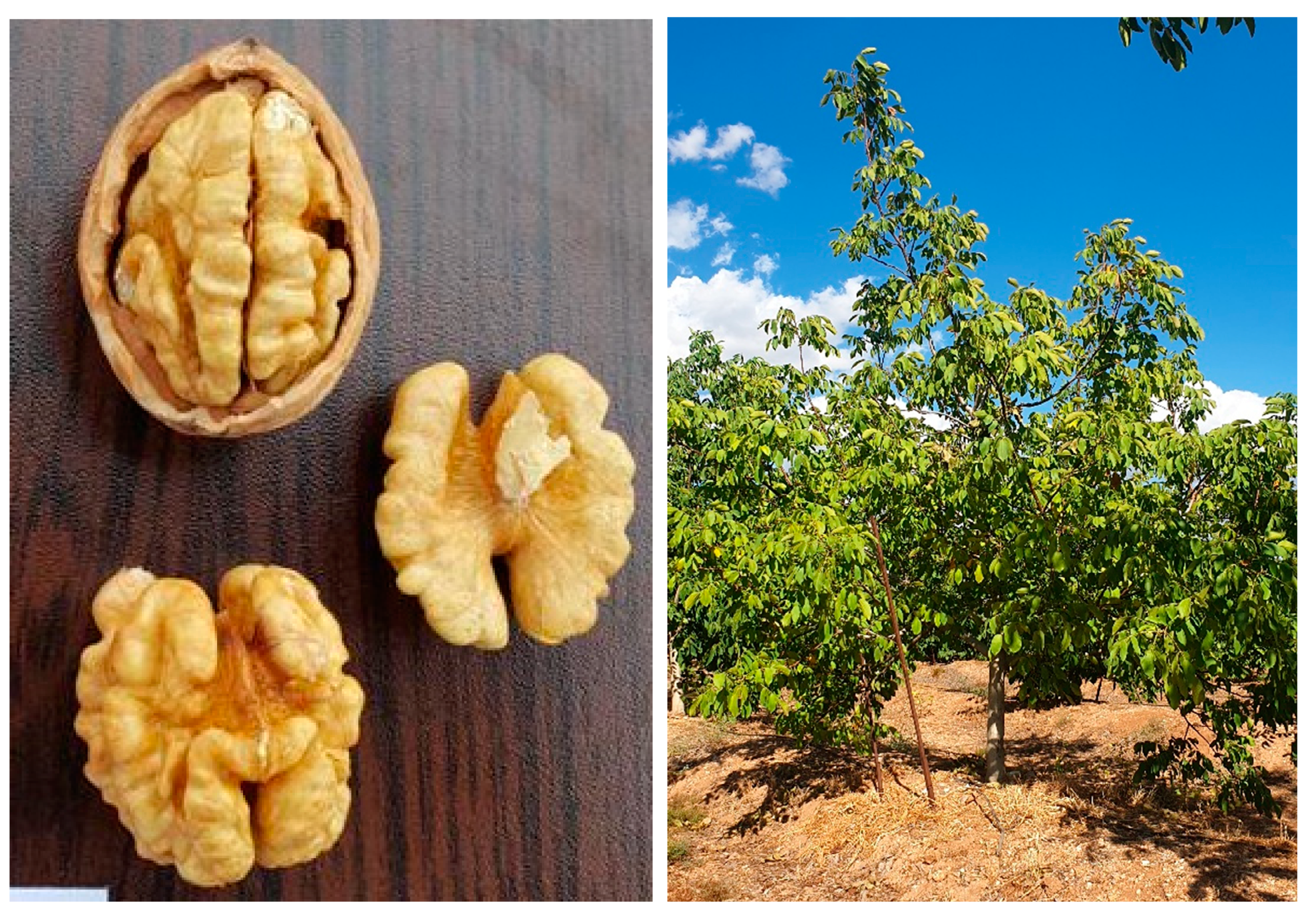- This topic is empty.
- AuthorPosts
- فروری 4, 2025 at 6:00 صبح #552218
 Agric4ProfitsModerator
Agric4ProfitsModerator
Walnut cultivation is a growing industry, with the nut’s demand increasing due to its nutritional value and versatility.
However, the successful cultivation of walnuts requires specific land conditions, including soil quality, climate, and environmental factors.
In assessing land for walnut farming, farmers must consider a range of factors that directly influence the yield and health of the trees.
This article will explore the key elements involved in assessing land for walnut cultivation, helping farmers understand the necessary conditions for optimal growth and production.
1. Soil Quality And Composition
One of the most critical factors in assessing land for walnut cultivation is the soil quality. Walnuts require deep, well-drained soil that can support the growth of their extensive root systems. The ideal soil composition for walnut trees includes loamy or sandy loam soils with good organic content.
The soil pH should be slightly acidic to neutral, ranging from 6.0 to 7.5. Poorly drained or compacted soils can lead to root rot and other diseases, so ensuring proper drainage is essential. Farmers should conduct a soil test before planting walnut trees to determine its fertility, texture, and pH levels.
This assessment helps in making necessary adjustments, such as adding lime or organic matter, to improve soil conditions.
2. Climate And Temperature Requirements
Walnut trees thrive in temperate climates with distinct seasons. When assessing land for walnut cultivation, it is crucial to consider the local climate conditions. Ideal temperatures for walnut trees range from 15°C to 25°C during the growing season.
They require a period of winter chilling, with temperatures below 7°C for at least 1,000 to 1,500 hours, depending on the variety. This chilling period is necessary for the trees to break dormancy and begin producing nuts.
Extreme cold temperatures, particularly below -20°C, can damage or kill walnut trees, while excessively hot conditions can lead to poor growth and reduced yields. Therefore, farmers must assess the region’s climate and choose walnut varieties suited to the local conditions.
3. Water Availability And Irrigation Systems
Water availability is another key factor in assessing land for walnut cultivation. Walnuts are water-intensive crops, particularly during the growing season when the trees need a steady supply of water for proper nut development.
Irrigation systems must be in place to ensure that the trees receive adequate water, especially in regions with inconsistent rainfall. Drip irrigation is commonly used for walnut orchards, as it delivers water directly to the tree’s root zone, reducing water waste and promoting healthy growth.
The land’s proximity to a reliable water source, such as rivers, lakes, or underground wells, should also be evaluated during the land assessment process to ensure a consistent water supply throughout the growing season.
4. Topography And Elevation
Topography plays an important role in walnut cultivation, as the terrain can affect water drainage and tree growth. When assessing land for walnut farming, the elevation of the land is a significant factor.
Walnuts grow best at elevations ranging from 200 meters to 1,500 meters above sea level, depending on the climate and local conditions.
Flat or gently sloping land is ideal, as it allows for proper water drainage, reducing the risk of waterlogging, which can harm the trees. Steep slopes are generally unsuitable for walnut cultivation, as they can lead to soil erosion and difficulty in managing irrigation systems.
Assessing the topography of the land helps farmers determine if the location is suitable for walnut orchards and if any modifications, such as terracing or soil erosion control measures, are needed.
5. Land Size And Spacing Requirements
Walnut trees require ample space for optimal growth, and the land’s size must be evaluated to accommodate this need. When assessing land for walnut cultivation, farmers must consider the spacing requirements of the trees, which can vary depending on the variety and the farming method.
On average, walnut trees need to be spaced 10 to 15 meters apart in rows, allowing for proper air circulation, sunlight exposure, and room for the trees’ canopy to spread.
The land should be large enough to accommodate the number of trees desired while also allowing for adequate machinery access for maintenance, harvesting, and other tasks. Careful planning of tree spacing and orchard layout is essential to maximize yield and ensure the long-term health of the walnut trees.
Assessing land for walnut cultivation requires a comprehensive evaluation of various factors, including soil quality, climate, water availability, topography, and land size. Each of these elements plays a vital role in the successful growth and productivity of walnut trees.
By carefully assessing these conditions before planting, farmers can increase the chances of a successful walnut orchard and ensure that their investment yields high-quality nuts. With proper planning and land assessment, walnut farming can be a profitable and sustainable agricultural venture.
Read Also: Key elements that contribute to successful walnut cultivation
- AuthorPosts
- You must be logged in to reply to this topic.





